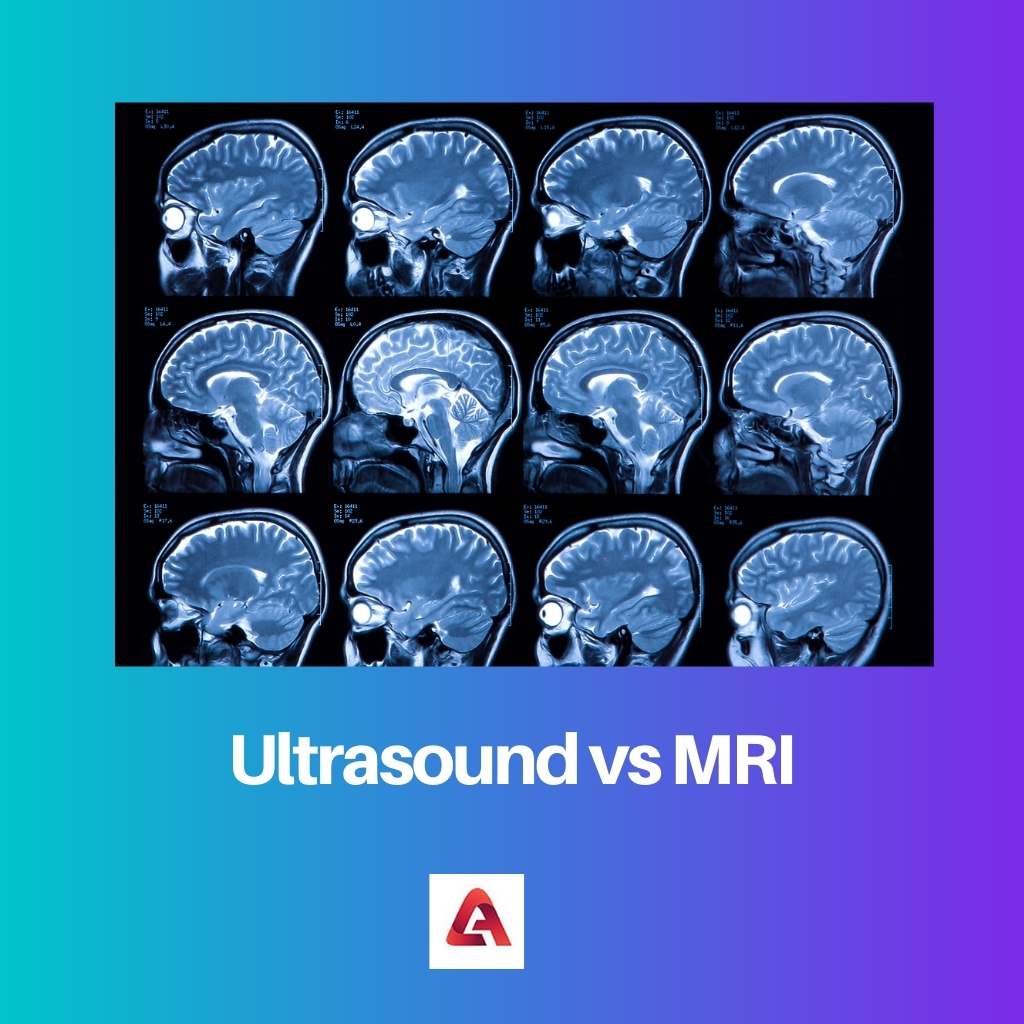Ultrasound and MRI are two tests used to diagnose underlying diseases. The doctors recommend these two methods to find out what is going on with the internal structures of our body.
However, these two are very different methods. Ultrasound is a common test, whereas MRI is comparatively powerful. Medical guidance is very necessary before going for the test.
Just because they are used to obtain internal images does not conclude that they can be used as a substitute for each other. Hence it is very important to perform any of these under medical guidance.
Key Takeaways
- Ultrasound uses high-frequency sound waves to create images, while MRI relies on magnetic fields and radio waves.
- MRI provides detailed images of soft tissues and internal organs, while ultrasound offers real-time imaging capabilities.
- Ultrasound scans are faster and more cost-effective than MRI scans.
Ultrasound vs MRI
Ultrasound is a medical imaging technique that uses high-frequency sound waves to produce images of a person’s internal organs and tissues. MRI is a non-invasive medical imaging technique that uses a strong magnetic field and radio waves to produce detailed images of internal body structures.

Ultrasound is a common, harmless performed to detect any underlying diseases beneath soft tissues. The process is affordable, painless, and of short duration.
Doctors assign it to patients to treat the perfect spot. The result comes in still images captured on the screen during the test. The sound waves can not travel through the bones and thus can not detect any bone injuries.
On the other hand, the MRI is considered a more accurate diagnostic tool. MRI stands for magnetic resonance imaging. It gives very detailed information.
Hence, the doctor prescribes this in case of serious bone injuries, tumours, or any suspectable inflammation. It is costlier and also a long process.
Comparison Table
| Parameters of Comparison | Ultrasound | MRI |
|---|---|---|
| Technique | It uses high-frequency sound waves to produce images of our internal parts. | It uses powerful magnets to produce 3d images of our internal organs. |
| Use | It is performed to detect any underlying diseases beneath soft tissues. | It is performed to detect serious bone injuries, tumors, or any suspectable inflammation. |
| Risk | The process is mild and does not include any strong or harmful elements. | The powerful magnets might be harmful to patients who have any ferromagnetic medical device implanted in their bodies. |
| Patient tolerance | It is done by laying the patient on the bed in a comfortable position and environment. Hence no difficulties take place. | The MRI environment may seem uncomfortable and intimidating to certain claustrophobic people. |
| Cost | It is a simple and affordable test. When prescribed by the doctor, any patient can go for one. | The process is long with detailed information and hence is much costlier. |
What is Ultrasound?
Ultrasound is recommended to diagnose soft tissues such as breasts or blood vessels. It is the safest process and does not have any such bad side effects. The process is very simple and short. Hence the formation of images is real quick.
One of the most important uses is to detect pregnancy and the growth of the fetus. Ultrasonography can be done on the exact spot as directed by the doctor.
During the process, a clear live view is available on the screen. Sometimes to make it dynamic, doctors are present during the test to detect the proper damage or injury.
Ultrasonography tests are suggested before the doctor prescribes any pain relief or steroid injections. They help in finding out the exact spot with the help of clear images. This, in turn, helps in better treatment and medication.
It is not a complicated process; hence, the patients are not scared during the test. It is done in a normal environment with the help of a transducer. The images are formed on the screen. There is no use of radiation.

What is MRI?
MRI is mainly recommended when a doctor needs to diagnose our bone structures. The process of 3d imaging by magnets transmits well through the bones.
Hence we get prominent images. It is also used to test lungs, bowers, or other air-filled organs.
However, there are certain disadvantages of MRI. Since it travels through the bones to capture images, very powerful magnets are required. This might be a risk, especially for patients with any ferromagnetic medical device implanted.
MRI is very time-consuming and is a long process. However, they give us the most detailed result. The magnet is used to arrange the water molecules properly so that the scanner can obtain a three-dimensional image of the targetted structure.
MRI can be intimidating for claustrophobic people. The surrounding is enclosed, and the patient is made to lie down. The duration is long, and patients can not tolerate the operation of the machine.
Due to this reason, the patient is sometimes given sedatives before the process to help to deal with the process.

Main Differences Between Ultrasound and MRI
- The most distinct main difference between Ultrasound and MRI is that Ultrasound uses high-frequency sound waves to produce images of our internal parts. Whereas MRI uses powerful magnets to produce 3d images of our internal organs.
- Then comes the risk. Ultrasound is mild and does not include any strong or harmful elements. On the other hand, the powerful magnets in MRI might harm patients with any ferromagnetic medical device implanted in their bodies. It is also not recommended for pregnant ladies.
- Ultrasound is performed to detect any underlying diseases beneath soft tissues. MRI is performed to detect serious bone injuries, tumours, or any suspectable inflammation.
- Ultrasound is a simple and affordable test. When prescribed by the doctor, any patient can go for one. The process in MRI is long with detailed information and hence is much costlier.
- Ultrasound is done by laying the patient on the bed in a comfortable position and environment. Hence no difficulties take place. The MRI environment may seem uncomfortable and intimidating to certain claustrophobic people.





